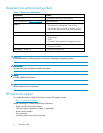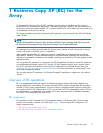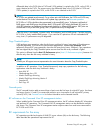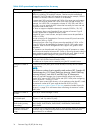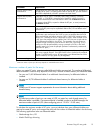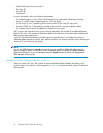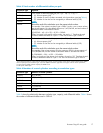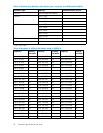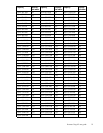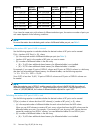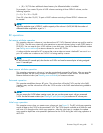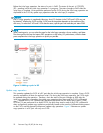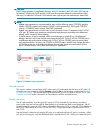
• Hitachi FlashCopy Mirroring version 2
• Flex Copy XP
• Auto LUN XP
• Snapshot XP
For more information, refer to the following documents:
• For ShadowImage for z/OS, Hitachi FlashCopy Mirroring, and Hitachi FlashCopy Mirroring
Version 2, see the HitachiShadowImageforz/OSuser guide.
• ForFlexCopyXP,see“CalculatingthemaximumnumberofFlexCopyXPcopypairs”.
• For Auto LUN XP, see “Calculating the number of Auto LUN XP concurrent migration plans”.
• ForSnapshotXP,seetheHP StorageWorks Snapshot XP user guide.
If BC is used in the same disk array as any of these applications, the number of available differential
tables for BC pairs is the number of differential tables in the disk array minus the number of differential
tables used by other applications.
If only BC uses differential tables, the following section describes how to calculate the number of
differential tables required for one BC pair, and the conditions you need to consider when calculating the
number of BC pairs that you can create.
NOTE:
You can use RAID Manager's inqraid command to query the number of differential tables required
when you create BC pairs. You can also use this command to query the number of unused differential
tables in the disk array. For more information about the inqraid command, see the
HP StorageWorks
RAIDManagerXPuserguide
.
Calculating the number of differential tables for one BC pair
When you create a BC pair, the number of required differential tables changes according to the
emulation type of the volumes. Use the equations in Table 3 to calculate the total number of differential
tables per pair.
16
Business Copy XP (BC) for the Array



